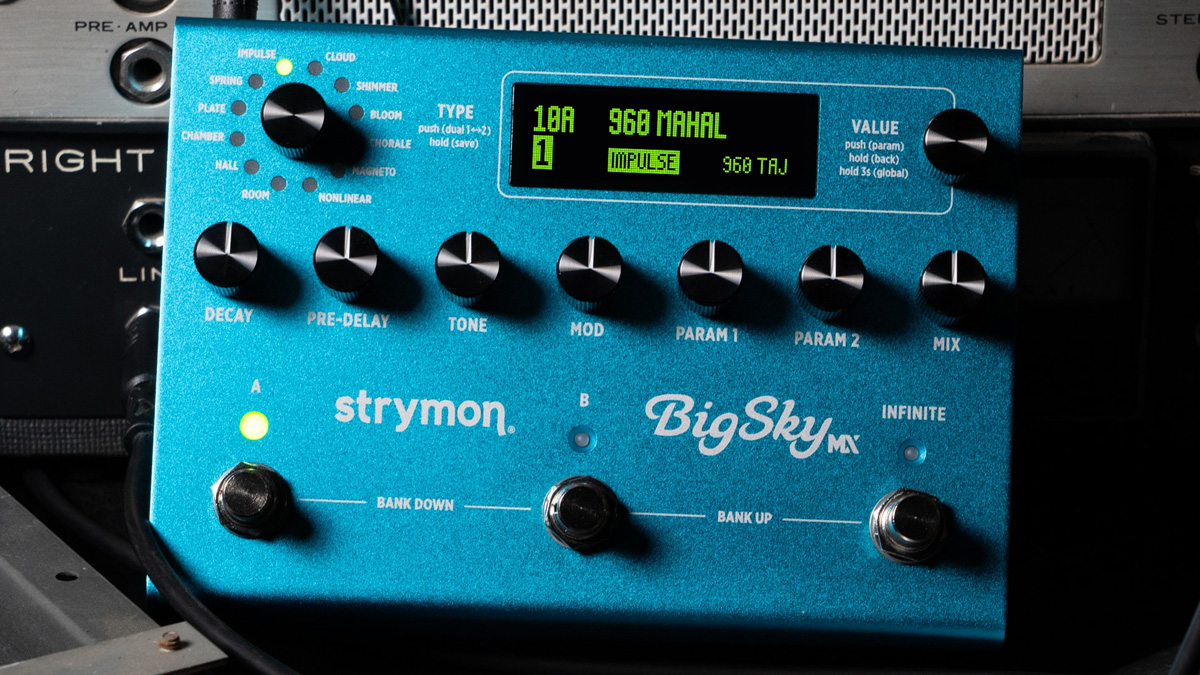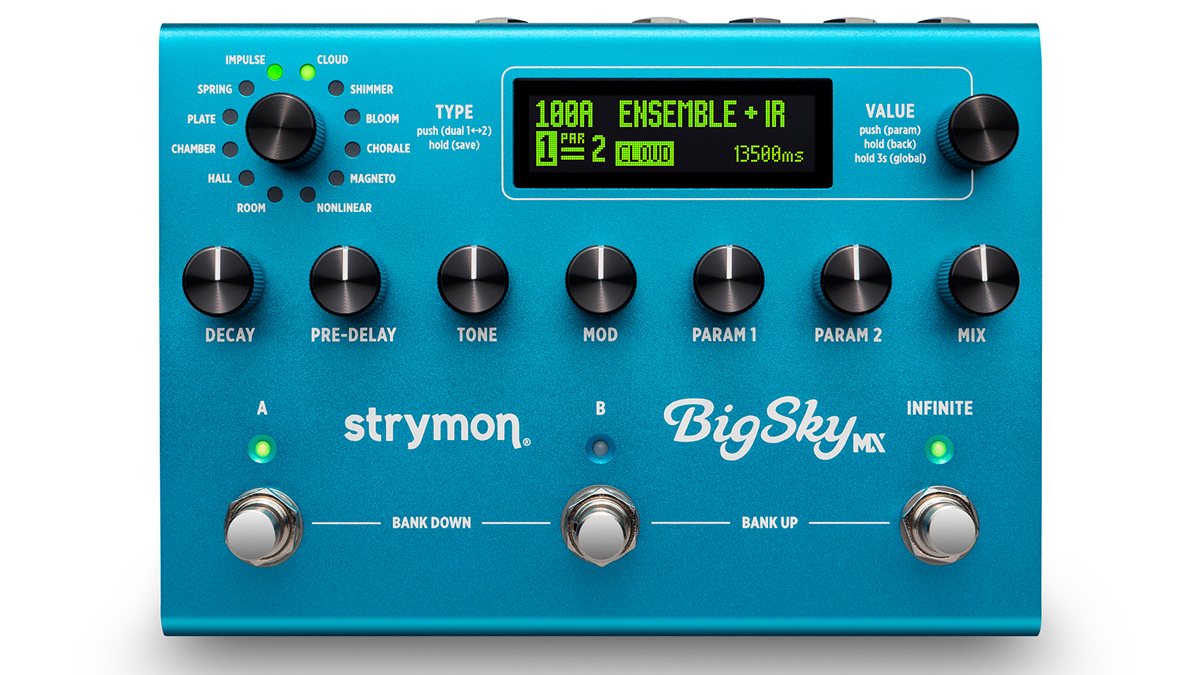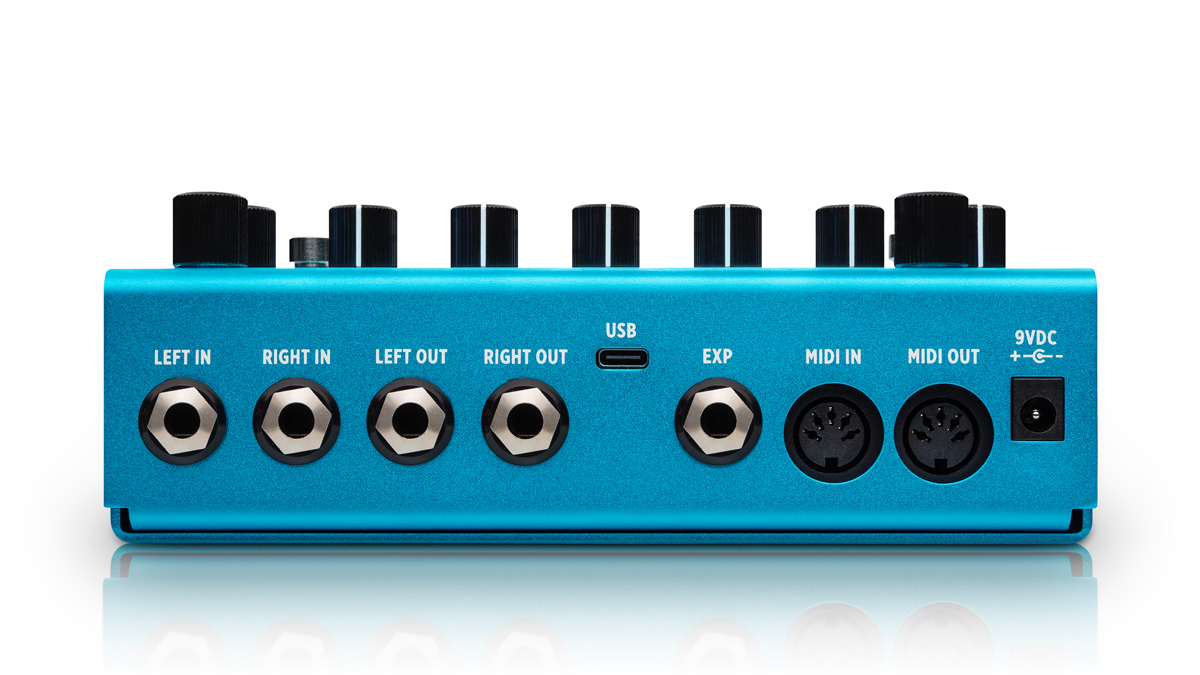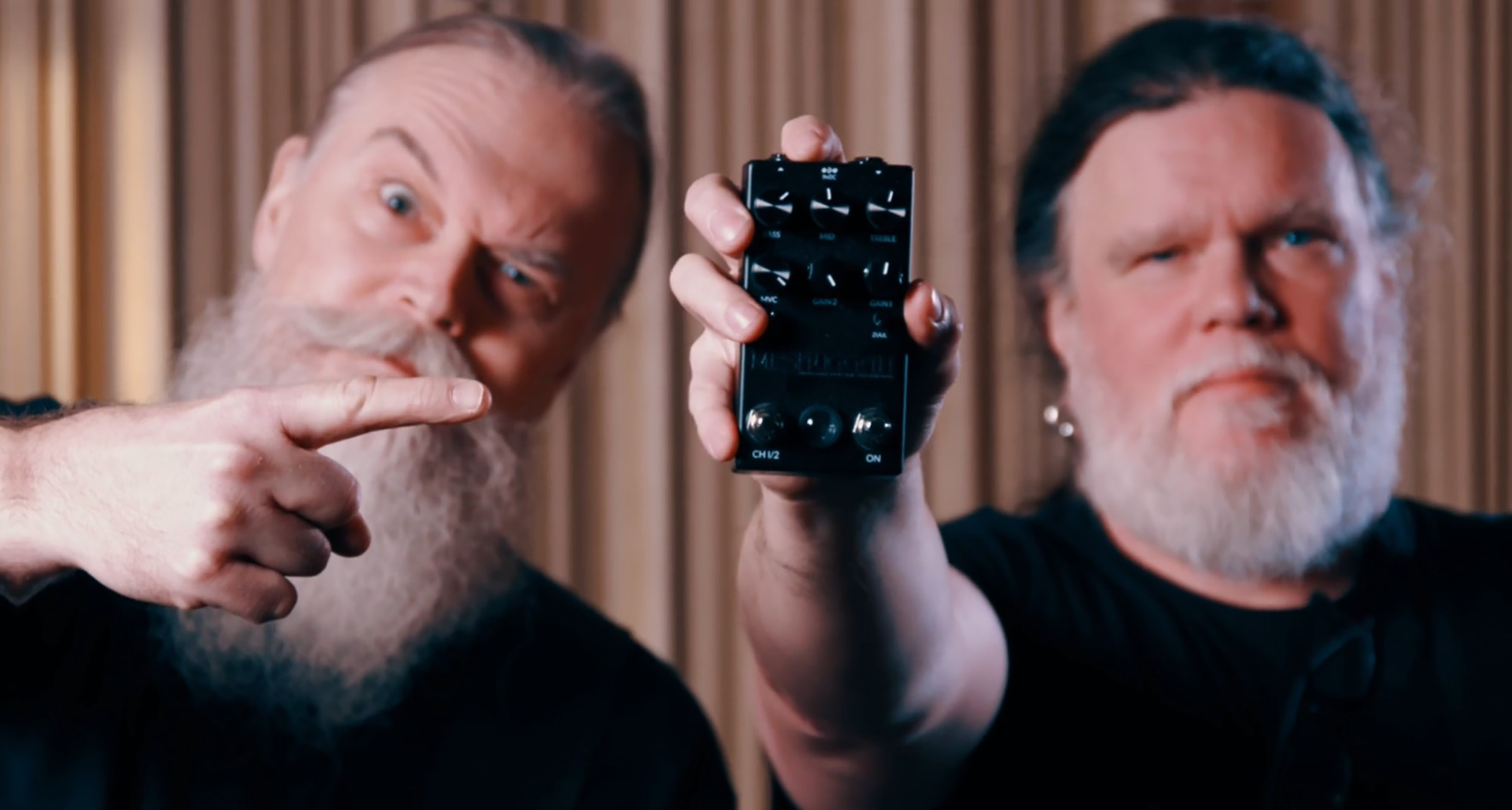“The absolute best ambiences we’ve ever made”: Run two reverbs at once with Strymon’s feature-packed BigSky MX
The BigSky MX looks every inch the ultimate reverb pedal. It features expanded IR functionality, stereo panning, all made possible by a super-powerful tri-core 800 MHz ARM processor

Strymon has unveiled its most powerful reverb pedal yet, the BigSky MX, which takes its flagship reverb and expands it out of sight, deploying a tri-core 800 MHz ARM processor to bring players the “absolute best ambiences” the guitar effects specialist has ever put together.
And there are a heap of new features to get the most of out its sounds – as with the original BigSky, which launched in 2013, the spec on this is bewildering.
If the BigSky MX is not the ultimate reverb pedal it is certainly in the conversation, with the pedal deploying a dual-engine approach that lets players run their electric guitar signal through two reverb algorithms at once, in series or parallel. And with full stereo operation you also have the option of individually panning these reverbs left and right.

When you are running two reverbs at once, you can assign footswitches to each sound so you can bring them in and out of the mix. Whether you are dialling in reverbs to add some sheen and space, to creating a black hole of ambience, there are myriad ways of controlling your settings and fine tuning your sound.
There are 12 reverb engines here, each selectable as before via the rotary dial, with LEDs illuminating the active engine. Seven of these have been engineered from the ground up, the rest have been tidied up and enhanced. Impulse and Chamber are totally new. Spring, Plate, Hall, Room and Shimmer sound familiar but are all-new algorithms – though with the original BigSky voicings for each still available.
Strymon used a “state-of-the-art gradient descent algorithm” to weed out unwanted artefacts and ringing in their sounds. State-of-the-art vibe is very much the prevailing vibe.
The BigSky MX feeds your signal through discrete Class A JFET input preamps. Around the back of the pedal you have stereo inputs and outputs, an expression pedal input, and there are MIDI and USB connections for making deep edits and managing your presets.
Get the MusicRadar Newsletter
Want all the hottest music and gear news, reviews, deals, features and more, direct to your inbox? Sign up here.
But on-unit adjustments are made easy by an intuitive control layout and a bright OLED display screen that should be visible under difficult light – and crucially presents players with all they information they need to manage their presets and preside over two reverbs at the same time.

Gregg Stock, CEO and co-founder, Strymon, says the BigSky MX has been almost four years in the making, and presents a high-water mark for the company’s industry standard reverb.
“It’s been a labour of love, and we knew that the legions of original BigSky fans were counting on us to get it right the first time,” he says. “In the end it exceeded all of our expectations, and we’re really happy with how it turned out.
“The 12 engines in BigSky MX produce the absolute best ambiences we’ve ever made, and the ability to run two engines at once and the impulse stuff is a major step forward.”
Ah, yes, the impulse stuff. This is another great evolutionary leap for the unit, augmenting the newly design reverb engines with IR captures of vintage gear. That new convolution engine does a lot of heavy lifting with this unit, allowing for 10 seconds of stereo impulse response playback per instance, and these IRs are editable, too.
There is an entire world of creative reverb in there to explore
Pete Celi, Strymon co-founder and DSP
“The new algorithms are bigger, wider and cleaner than anything we’ve been able to achieve in the past, and impulse response playback is a welcome addition,” says Pete Celi, Strymon’s co-founder and DSP engineer. “We’ve included our very own long captures of some classic studio devices and some oddball vintage units collected by one of our engineers too, so there is an entire world of creative reverb in there to explore.”
Like its predecessor, the BigSky MX is designed and made in California, and like its predecessor it commands a serious price. At $679, it is no cheap date. But it looks like Strymon has raised the bar once again. As reverb pedals go, this looks tough to beat.
What isn’t mentioned with the release of the BigSky MX is what the “MX” in the designation means for the rest of the Strymon core lineup. Having retooled the BigSky some 13 years after its launch, is the TimeLine delay pedal next on the list? Or the Mobius modulation pedal? Time will tell. But maybe best earmark some pedalboard real estate now, just in case.
For more details, head over to Strymon.
Jonathan Horsley has been writing about guitars and guitar culture since 2005, playing them since 1990, and regularly contributes to MusicRadar, Total Guitar and Guitar World. He uses Jazz III nylon picks, 10s during the week, 9s at the weekend, and shamefully still struggles with rhythm figure one of Van Halen’s Panama.
“For guitarists who crave an unrelenting, aggressive tone that stands out in any mix”: The Fortin Meshuggah head is the amp every metal player wants – now you can get its crushing tones in a pedal
“A fully playable electro-mechanical synth voice that tracks the pitch of your playing in real time”: Gamechanger Audio unveils the Motor Pedal – a real synth pedal with a “multi-modal gas pedal”










